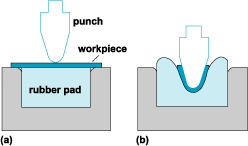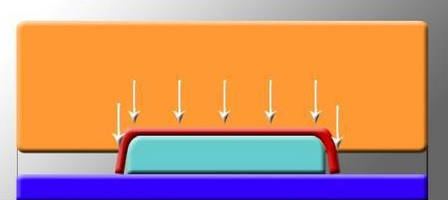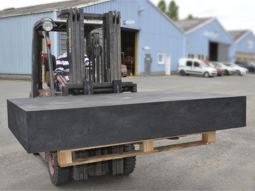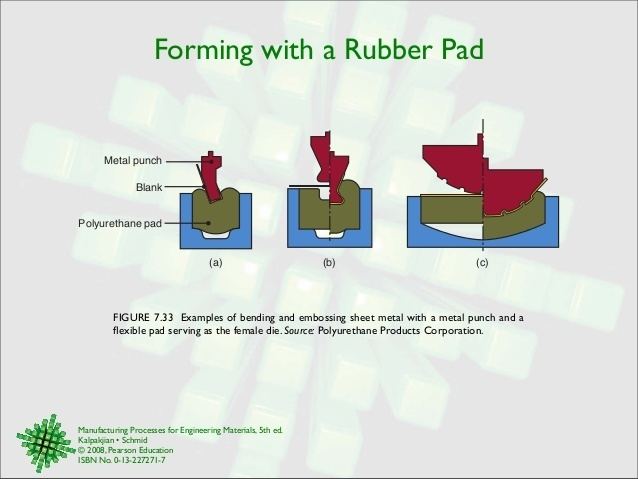 | ||
Similar Deep drawing, Hydroforming, Brake (sheet metal bending) | ||
Bearhawk patrol part 3 forming lightening holes with rubber pad forming
Rubber pad forming (RPF) is a metalworking process where sheet metal is pressed between a die and a rubber block, made of polyurethane. Under pressure, the rubber and sheet metal are driven into the die and conform to its shape, forming the part. The rubber pads can have a general purpose shape, like a membrane. Alternatively, they can be machined in the shape of die or punch.
Contents
- Bearhawk patrol part 3 forming lightening holes with rubber pad forming
- Definition
- The Guerin process
- Variants and similar processes
- References
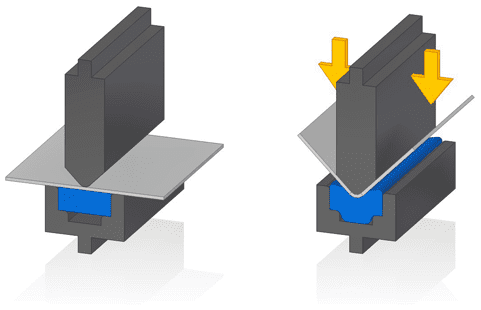
Rubber pad forming has been used in production lines for many years. Up to 60% of all sheet metal parts in the aerospace industry are fabricated using this process. The most relevant applications are indeed in the aerospace field. It is frequently used in prototyping shops and for the production of kitchenware.

Definition

Rubber pad forming has evolved through various methods, and its applications have expanded with technological advancements. Typically, this process involves an elastic upper die, commonly made of rubber, attached to a hydraulic press, and a rigid lower die, known as a form block, which acts as the mold for shaping sheet metal. The versatility of using the upper (male) die with different lower (female) dies makes this technique both cost-effective and adaptable. The worked metal is not worn as quickly as in more conventional processes such as deep drawing, however, rubber pads exert less pressure in the same circumstances as non-elastic parts, which may lead to less definition in forming, and rubber pads wear more quickly than steel parts.
The Guerin process
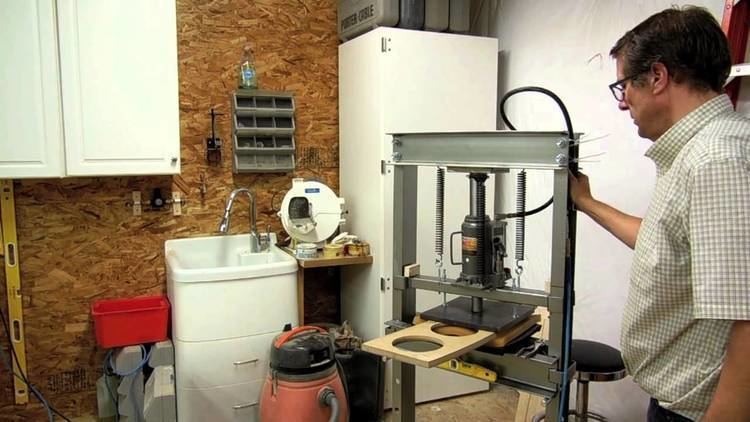
The Guerin process, also called Guerin Stamping, is a manufacturing process used in the shaping of sheet metals. It is the oldest and most basic of the production rubber-pad forming processes.
Variants and similar processes
